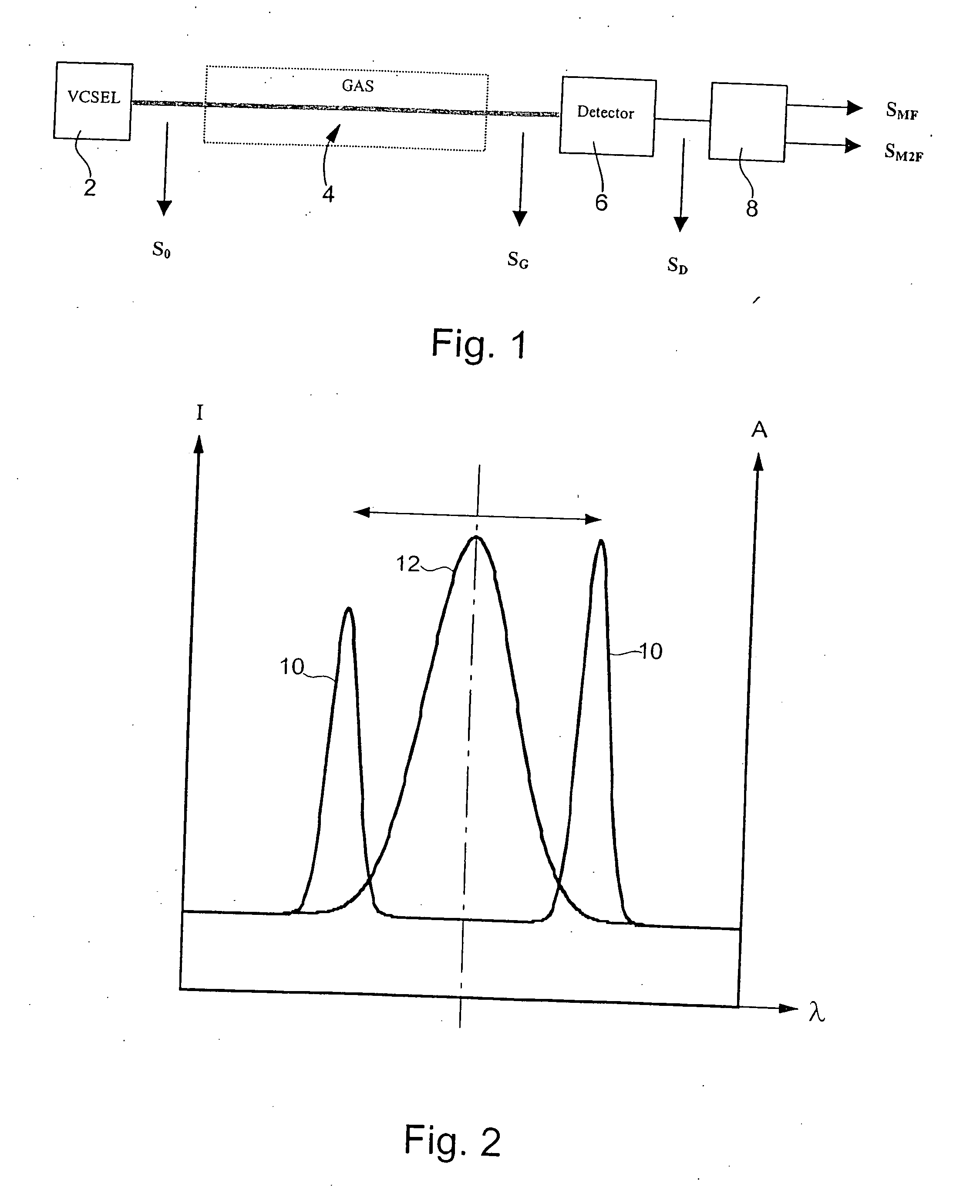Gas detection method and gas detector device
a gas detection and gas detector technology, applied in radiation pyrometry, instruments, material analysis, etc., can solve the problems of low light efficiency, high power consumption of thermal light sources, and low light efficiency of non-diffractive ir gas detectors
- Summary
- Abstract
- Description
- Claims
- Application Information
AI Technical Summary
Benefits of technology
Problems solved by technology
Method used
Image
Examples
Embodiment Construction
[0026] With reference to FIGS. 1 to 9, the method for detecting a gas concentration according to the present invention will be described.
[0027] As schematically shown in FIG. 1, the gas detector device according to the invention comprises a light source formed by a VCSEL 2, a sample chamber or detection region 4 where a gas to be detected can be introduced, a light detector 6 and processing means 8 which provide two measuring signal SMF and SM2F allowing a gas concentration to be defined. The VCSEL generates an initial light beam S0 which is wavelength modulated. This light beam passes through the region 4. Due to the gas absorption, the initial light signal presents an intensity variation after having passed through the gas detection region 4 and thus the detector 6 receives a resulting light signal SG. The detector provides a corresponding detection signal SD to the processing means 8.
[0028] As shown in FIG. 2, the VCSEL wavelength λ (center of the light intensity peak 10) is mo...
PUM
| Property | Measurement | Unit |
|---|---|---|
| frequency | aaaaa | aaaaa |
| concentration | aaaaa | aaaaa |
| time | aaaaa | aaaaa |
Abstract
Description
Claims
Application Information
 Login to View More
Login to View More - R&D
- Intellectual Property
- Life Sciences
- Materials
- Tech Scout
- Unparalleled Data Quality
- Higher Quality Content
- 60% Fewer Hallucinations
Browse by: Latest US Patents, China's latest patents, Technical Efficacy Thesaurus, Application Domain, Technology Topic, Popular Technical Reports.
© 2025 PatSnap. All rights reserved.Legal|Privacy policy|Modern Slavery Act Transparency Statement|Sitemap|About US| Contact US: help@patsnap.com



